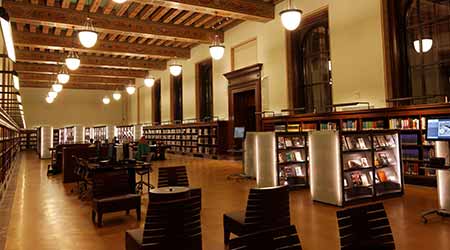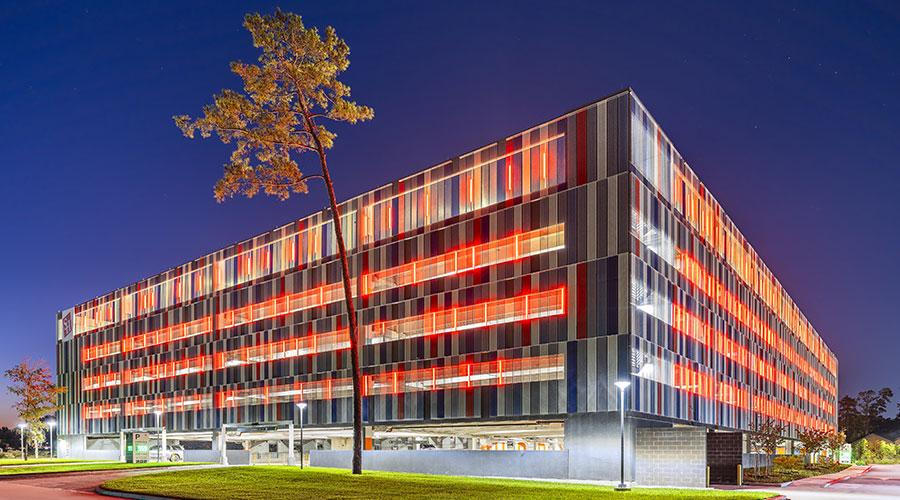 By understanding lighting product options and carefully considering installation strategies, managers will be better able to quantify upgrade results meet organizational goals.
By understanding lighting product options and carefully considering installation strategies, managers will be better able to quantify upgrade results meet organizational goals.Lighting in the Spotlight
Strategies to ensure lighting system upgrades help managers meet demands for aesthetics and energy efficiency
Lighting systems are an integral part of every institutional and commercial facility, and they change and improve fairly regularly to meet the changing needs of building occupants. Given the myriad options and unique constraints inherent to every renovation or retrofit, determining the optimal way to upgrade lighting systems can prove quite challenging for maintenance and engineering managers, who typically are not lighting experts.
By understanding product options and carefully considering installation strategies, they will be better able to quantify project results that meet the top executives’ goals and benefit the organization’s bottom line.
Researching products
When starting the research and product selection process for a lighting upgrade, it is vital to not lose sight of the larger picture. Lighting serves a purpose — namely, supporting the organization’s mission. Many product options exist, and managers need to appraise them compared to the organization’s long-term goals. A lighting professional can help narrow down the product options to a manageable few.
Another critical first step is to become fully informed on current code requirements affecting the project. For example, in the Midwest, where energy code adoption has been considerably slower compared to other parts of the country, managers often are stunned to discover the practical implications of new code requirements. They might be accustomed to minimal analog automatic lighting controls, while new codes essentially require multiple layers of digital automatic lighting controls in most space, including the exterior.
When evaluating lighting product options, managers tend to compare first costs. Unfortunately, these costs represent only a part of the bigger picture. The life-cycle cost or total cost of ownership are much more thorough metrics for comparing the value of various systems. At the very least, a proper life-cycle cost will include the initial upgrade cost, energy costs, and the maintenance costs over the system’s performance life.
Where applicable, managers should include utility rebate programs in the life-cycle-cost analysis. It is worth noting that rebate programs have rules that organizations typically must follow carefully. For example, buying products before the rebate program has reviewed and accepted a project could disqualify the project. Submitting a project too soon or too late also could disqualify the project. Finally, someone needs to provide the required rebate documentation associated with the rebate program, and the project manager needs to ensure the designated parties are aware of their responsibilities.
Utility cost structure also affects a life-cycle-cost analysis. While it is tempting to use a simple cost per kilowatt-hour (kWh) when calculating energy costs, rate structures sometimes are more complicated. For large services, the cost per kWh typically is the sum of several costs, including base fees, taxes, gradated energy costs, and demand charges. Gradated fees and demand charges deserve special attention.
On the plus side, lighting upgrades typically reduce the overall electrical demand on a service, while on the downside, lighting energy savings typically skim off the top on a gradated cost structure where the kWh are worth less. What matters is that the team clearly understands the rate structure in effect so managers can calculate realistic savings.
The life-cycle-cost analysis also needs to address maintenance reduction. Having a conversation with the design team about this issue is invaluable because the facility manager has firsthand knowledge of the cost of replacement products.
One study for an Illinois college offers a good illustration of this issue. The sports facility used metal halide high-bay fixtures and was equipped with an expensive floor. While the owners were paying a premium for obsolete replacement ballasts — which was the reason the study was conducted — it took a minimum of eight hours to replace a lamp or ballast because of difficulties accessing the lights. Without a dialogue with the owner about the replacement process, the life-cycle-cost would have overlooked these replacement costs.
Facility managers also must be careful they do not overstate maintenance costs for existing systems and understate them for new systems, particularly with the new misleading adage that LEDs last forever, which is not true.
Related Topics:














